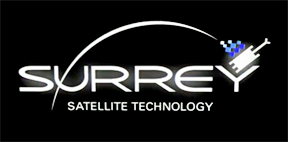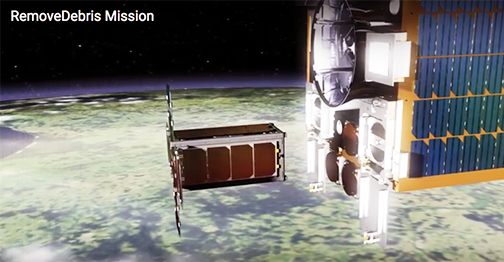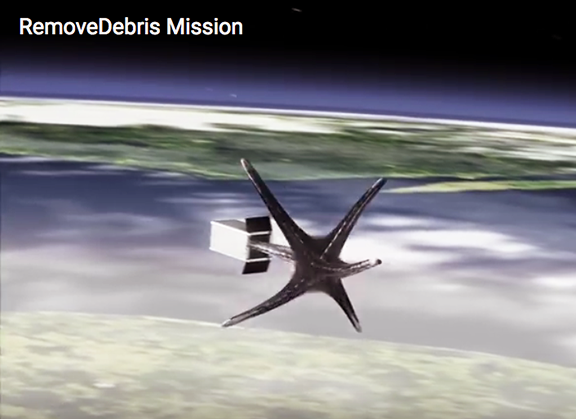

The RemoveDEBRIS satellite has successfully used its on-board net technology in orbit — the first demonstration in human history of active debris removal (ADR) technology.
The spacecraft began the experimental phase of its mission on Sunday, September 16, when it used a net to capture a deployed target simulating a piece of space debris.

RemoveDEBRIS was designed, built and manufactured by a consortium of leading space companies and research institutions led by the Surrey Space Centre at the University of Surrey. The spacecraft is operated in orbit by engineers at Surrey Satellite Technology Ltd. in Guildford, UK. The project is co-funded by the European Commission.

In the coming months, RemoveDEBRIS will test more ADR technologies: a vision-based navigation system that uses cameras and LiDaR technology to analyze and observe potential pieces of debris; the first harpoon capture technology used in orbit; and a drag-sail that will finally bring RemoveDEBRIS into the Earth’s atmosphere where it will be destroyed, bringing its mission to a close.
The U.S. Space Surveillance Network tracks 40,000 objects and it is estimated that there are more than 7,600 tons of ‘space junk’ in and around Earth’s orbit, with some moving faster than a speeding bullet, approaching speeds of 30,000 miles per hour.
The research leading to these results has received funding from the European Union Seventh Framework Program [FP7/2007-2013] under grant agreement n°607099.
An excellent video of the RemoveDEBRIS mission is available for viewing at this direct link...
The RemoveDEBRIS consortium consists of:
- Mission and consortium coordination – Surrey Space Centre (UK)
- Satellite system engineering – ArianeGroup (France)
- Platform, avionics and spacecraft operations – SSTL (UK)
- Harpoon – Airbus (UK)
- Net – Airbus (Germany)
- Vision based navigation – CSEM (Switzerland)/ INRIA/ Airbus (France)
- CubeSat dispensers – Innovative Solutions in Space (Netherlands)
- Target CubeSats – Surrey Space Centre (UK)/ Stellenbosch University (South Africa)
- Dragsail – Surrey Space Centre (UK)
Executive Comments
Professor Guglielmo Aglietti, Director of the Surrey Space Centre, said that the organization is absolutely delighted with the outcome of the net technology. While it might sound like a simple idea, the complexity of using a net in space to capture a piece of debris took many years of planning, engineering and coordination between the Surrey Space Centre, Airbus and partners; however, there is more work to be done. These are very exciting times for all.
Ingo Retat, Airbus RemoveDEBRIS project head, added that to develop this net technology to capture space debris, the team spent six years testing in parabolic flights, in special drop towers and also thermal vacuum chambers. This small team of engineers and technicians have done an amazing job moving one step closer to clearing up LEO of debris.

